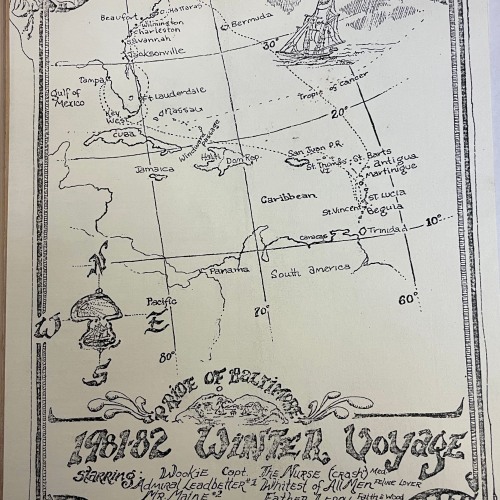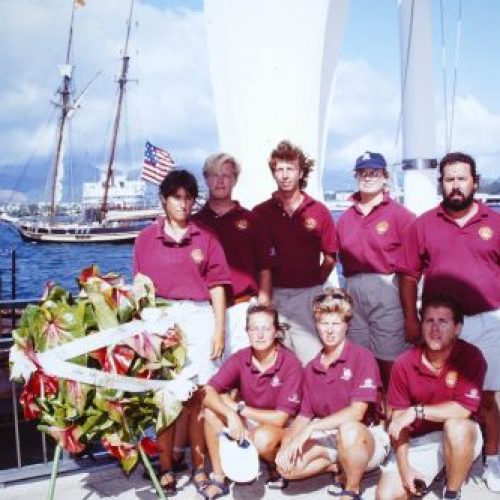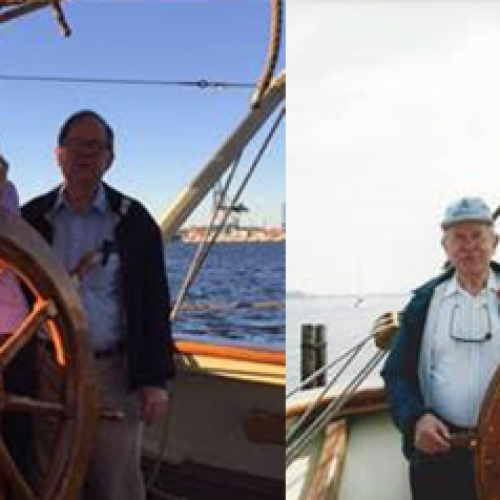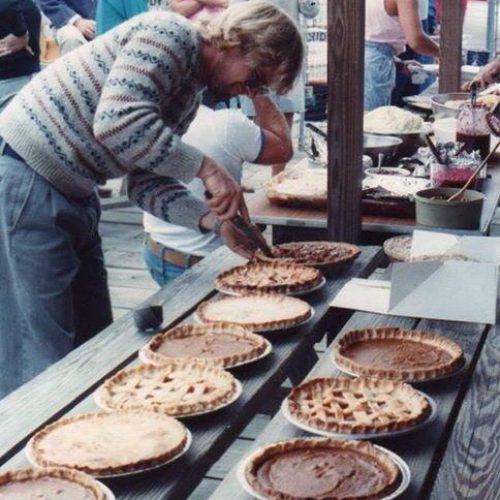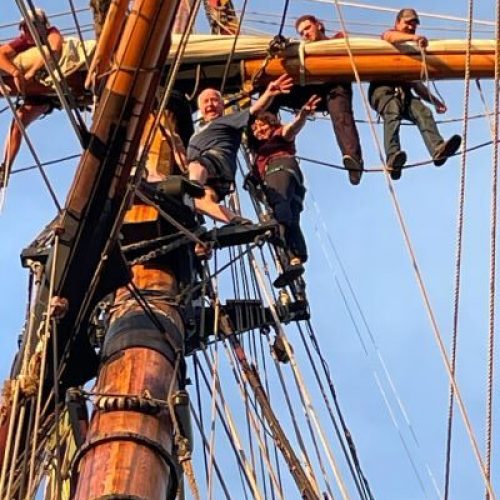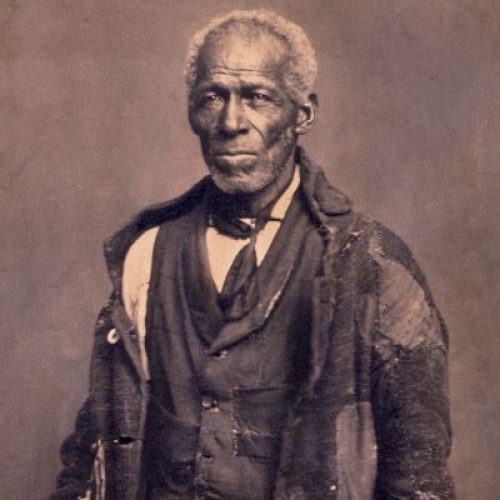9 August 2010
Pos: Lower St. Marys River, Downbound for De Tour Passage and Lake Huron
Wx: ESE Force 2
Motoring at 1400 RPM
One Small Step for Pride II
At 1230 EDT today, Pride of Baltimore II took the first step back toward sea. It is a small one, lowering the vessel from the “Upper Pool” of the St. Marys River to the “Lower Pool” with a total elevation change of roughly 23 feet. It is also our last step for quite some time, as our next three Lakes – Huron, Michigan and Erie – are all interconnected through the Straits of Mackinac and the Detroit/St. Clair River System.
Our last day and night in Superior afforded gorgeous weather and lots of activity. When the breeze faded, we got Pride II on station at anchor three miles off the Tahquamenon River and almost immediately opened the “pool” for swimming. The calm weather and relatively shallow water of Whitefish Bay made for the warmest swimming we’d done in three Lake Superior swim calls, as well water so clear the anchor chain was visible from the surface.
For the more adventurous we launched both the red-inflatable and Chasseur, our traditional lap-straked pulling boat, and set parties ashore. Four of the guest crew joined Deckhand James Smith and I in rowing Chasseur in the three-miles to the beach. Or nearly to the beach. The shoreline shoals to knee-depth nearly 200 yards out from the shore, so we anchored Chasseur and waded in the rest of the way.
The water we waded through was still clear, but rusty red from the iron deposits along the Tahquamenon River. The waterfalls further upstream that mark the center of Tahquamenon Falls State Park also share this quality, and so have a distinctive rusty froth to them. But when I visited them before, I was coming by car, on shore, and didn’t realize they are a full 17 miles from the mouth. We might still be rowing toward them if we’d tired to make it. Nevertheless, those who ventured ashore were rewarded with a few nice beaches, a gorgeous sunny day and a true taste of Michigan’s Upper Peninsula – smoked whitefish! This was delivered from a local who came out to take a peek at Chasseur lying at anchor just off the beach.
By sunset, the boats were back aboard Pride II, and dinner was served. For the six of us who rowed Chasseur back it was well earned, too. The light breezes had built up a chop that was imperceptible aboard Pride II, but meant quite a bit of motion in an 18′ open boat. As we clawed our way back to Pride II the sun set over the Tahquamenon River and the nearby town of – no kidding – Paradise, Michigan. For our last “Superior” sunset, it was fitting and gave rise to reflections on the wonder and struggle that the Explorers, the Voyageurs and the Fur-Traders must have felt, sailing small ships or rowing smaller canoes across such a vast expanse of water so far into the interior of the continent.
Along these lines, the following scenario has always fascinated me: In the height of the fur-trading era, single trappers and two or three-man teams wintered over in the lands that are now Northern Minnesota and Canada, trapping through the fall and again in the spring. In mid-summer, they would descend down to the settlement at Grand Portage to trade furs for finished goods and supplies brought by their counterparts from the East.
These Eastern traders, were know by a French phrase I can vaguely pronounce but not at all spell, that means, essentially, “pork eaters” due to the staple of their traveling diet -salt pork. They would set out from Quebec in the spring as a fleet of 36′ Algonquin War Canoes, loaded with supplies and 18 men per canoe, and paddle until they reached the far end of Lake Superior, and Grand Portage to trade with the fur-trapping Voyageurs.
Predictably, the trading would be accompanied by much merry-making, so the “rendezvous” must have had a festive element to it. Deservedly so, as surviving a northern winter or paddling such a distance through what was then wilderness are both reasons to celebrate.
And it occurs to me there are great similarities to the Great Lakes voyages Pride II and other traditional vessels make from the East Coast, West Coast or Europe. Our route, of course, is similar, except that by a series of lakes and portages along what is now the Nippising Canal in Ontario, the canoeing folk avoided most of Lake Huron, and all of Lake Erie – the last Lake to be seen by Europeans. And true, we are not trading buttons and flints or blankets and boots for much desired furs. But we are perhaps doing the reverse, at least symbolically – instead of bringing exotic furs back to the East, we represent the exotic, the romantic lure of traditional sail that is not often seen on the Lakes except through considerable effort of coming from the East. Likewise, the excitement and enthusiasm we experience at any of the Great Lakes ports must rival that of the voyageurs seeing their comrades once more.
But soon, our route will take a very different change from the one I just detailed. Instead of taking the picturesque North Channel Southeast into the Georgian Bay, Pride II will continue South out of the St. Marys into Lake Huron, then turn West through the Straits of Mackinac to Lake Michigan. With four ports on our schedule there, we will be spending more time in Lake Michigan than any of the other Lakes. Once we cross under the Mackinac Bridge tonight, we won’t make the return trip through it for four weeks.
All best,
Jamie Trost and the one step closer to sea-level crew of Pride of Baltimore II

